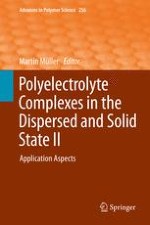
2014 | OriginalPaper | Buchkapitel
Polyelectrolyte Complexes for Tailoring of Wood Fibre Surfaces
verfasst von : Caroline Ankerfors, Lars Wågberg
Erschienen in: Polyelectrolyte Complexes in the Dispersed and Solid State II
Verlag: Springer Berlin Heidelberg
Aktivieren Sie unsere intelligente Suche, um passende Fachinhalte oder Patente zu finden.
Wählen Sie Textabschnitte aus um mit Künstlicher Intelligenz passenden Patente zu finden. powered by
Markieren Sie Textabschnitte, um KI-gestützt weitere passende Inhalte zu finden. powered by